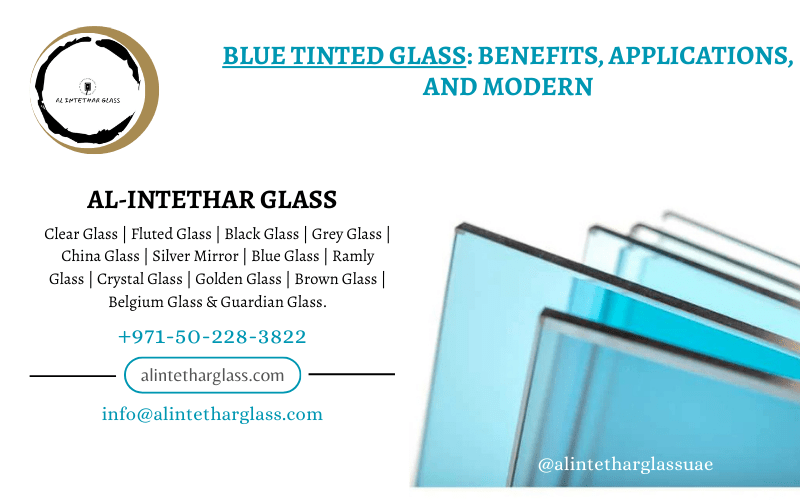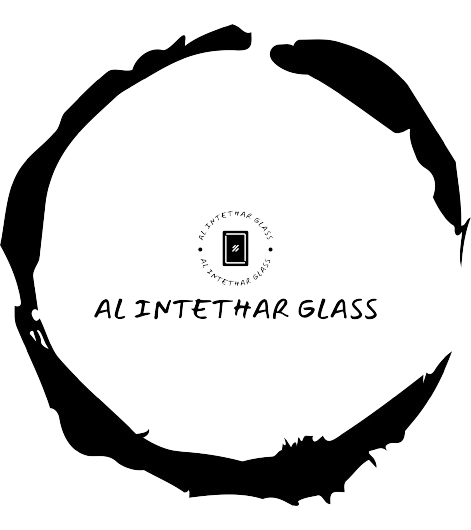Blue Tinted Glass: Benefits, Applications, and Modern
Glass has always been an essential material in architecture, automotive design, and interior decor. While clear glass remains the standard, blue tinted glass has gained increasing popularity in both residential and commercial projects. This type of glass not only adds a striking visual appeal but also brings functional benefits such as solar control, energy efficiency, and privacy enhancement. In today’s world, where design meets sustainability, blue tinted glass is becoming a preferred choice for architects, homeowners, and manufacturers alike.
In this article, we will explore what blue tinted glass is, its benefits, common applications, and why it continues to be a trend in modern design.

What is Blue Tinted Glass?
Blue Tinted glass is a type of float glass that has a subtle or deep blue coloration incorporated during the manufacturing process. Instead of being coated or painted, the blue tint comes from metallic oxides added to the molten glass mixture. This ensures that the color is consistent throughout the glass sheet and does not fade or peel over time.
The tint reduces the transmission of solar heat and glare without drastically cutting natural daylight. Depending on thickness, the shade can range from light sky blue to deep aqua tones, making it suitable for both aesthetic and functional uses.
Key Benefits of Blue Tinted Glass
1. Solar Control and Heat Reduction
One of the primary reasons Blue Tinted Glass is used in buildings is its ability to filter sunlight. It reduces the amount of solar heat gain, keeping indoor spaces cooler during hot weather. This leads to lower reliance on air-conditioning, translating to energy savings.
2. Energy Efficiency
By controlling heat gain and reducing glare, blue tinted glass contributes to energy-efficient building designs. It aligns with sustainable architecture goals, reducing electricity consumption while maintaining comfort.
3. Aesthetic Appeal
The elegant blue hue adds a modern and refreshing look to any building or vehicle. It stands out compared to clear or green-tinted glass, making it a popular choice for high-rise facades, skylights, and interior partitions.
4. UV Protection
Blue Tinted Glass blocks a significant portion of harmful UV rays, protecting interiors, furniture, and occupants from prolonged exposure. This is especially valuable for offices and homes with large glass windows.
5. Glare Reduction
For office buildings, classrooms, and living rooms with wide windows, glare can be a serious issue. Blue tinted glass helps reduce excessive brightness while maintaining visibility and natural light penetration.
6. Privacy Enhancement
Darker shades of Blue Tinted Glass increase privacy by limiting visibility from the outside during daytime, while still allowing occupants to enjoy external views.
Common Applications of Blue Tinted Glass
Blue Tinted Glass is versatile, and its applications extend across multiple industries:
1. Architecture and Construction
Facades and Windows: High-rise buildings, malls, and office towers often use blue tinted glass for exterior glazing.
Skylights and Atriums: The tint softens sunlight, creating a soothing ambiance indoors.
Residential Homes: Villas and apartments incorporate blue tinted windows for both style and comfort.
2. Automotive Industry
Cars and buses use blue tinted glass in windows and windshields to reduce glare, heat, and UV radiation while improving passenger comfort.
3. Interior Design
Interior designers utilize blue tinted glass for partitions, shower enclosures, doors, and furniture like tabletops. Its unique color adds a modern, sleek look to spaces.
4. Commercial Buildings
Corporate offices, hotels, and airports rely on blue tinted glass to enhance aesthetics while maintaining energy efficiency.
5. Marine Industry
Ships, yachts, and coastal structures use blue tinted glass as it complements water surroundings while providing solar protection.
Different Shades and Thicknesses
Blue tinted glass comes in a range of shades from light sky blue to deep azure. The intensity of the color often depends on thickness:
4mm–6mm: Light, subtle blue suitable for residential windows.
8mm–10mm: Moderate tint, often used in offices or commercial spaces.
12mm and above: Deep blue, ideal for facades, curtain walls, and decorative features.
The choice depends on the desired balance between light transmission, energy efficiency, and design appeal.
Why Architects Prefer Blue Tinted Glass
Modern architecture emphasizes both sustainability and style. Blue tinted glass checks both boxes by offering:
Eco-friendly energy savings
Durability with permanent coloration
Compatibility with double glazing and laminated glass
Enhanced visual design with contemporary appeal
It also blends beautifully with natural surroundings like the sky and sea, making it a popular option in coastal developments and urban skylines.
Maintenance and Durability
Blue tinted glass requires no special maintenance compared to standard glass. Regular cleaning with a non-abrasive glass cleaner is sufficient to maintain its shine and clarity. Since the color is infused during production, it does not fade, chip, or peel, ensuring long-lasting performance.
Blue Tinted Glass in Sustainable Design
As the demand for green buildings rises, energy-efficient materials are in focus. Blue tinted glass contributes to sustainable construction by:
Reducing energy loads for cooling
Enhancing occupant comfort
Lowering carbon footprints of buildings
It is often combined with low-E coatings or double-glazed units for maximum efficiency. This makes it an essential component in the future of smart, eco-conscious architecture.
Market Trends and Future Outlook
The demand for blue tinted glass is growing globally due to urbanization, rising temperatures, and the push for sustainable infrastructure. Key trends include:
Integration with smart glass technology for adjustable tint levels.
Increased use in luxury interiors like offices, restaurants, and spas.
Expansion in the electric vehicle market, where tinted glass is standard for energy efficiency and passenger comfort.
Conclusion
Blue tinted glass is more than just a stylish option—it’s a practical and sustainable solution for modern architecture, interiors, and automobiles. With benefits like solar control, UV protection, energy savings, and privacy, it balances beauty with performance.
As cities continue to grow and sustainability becomes a necessity, Blue Tinted Glass will remain at the forefront of innovative design. Whether you’re building a home, upgrading an office, or designing a high-rise façade, this material offers a perfect blend of function and elegance.
Tags: Blue Glass Panels, Blue Tinted Glass, Commercial Glass Solutions, Decorative Glass, Energy Efficient Glass, Glass for Facades, High-Quality Glass Sheets, Modern Glass Designs, Privacy Glass, Residential Glass Solutions, Tinted Glass Sheets

